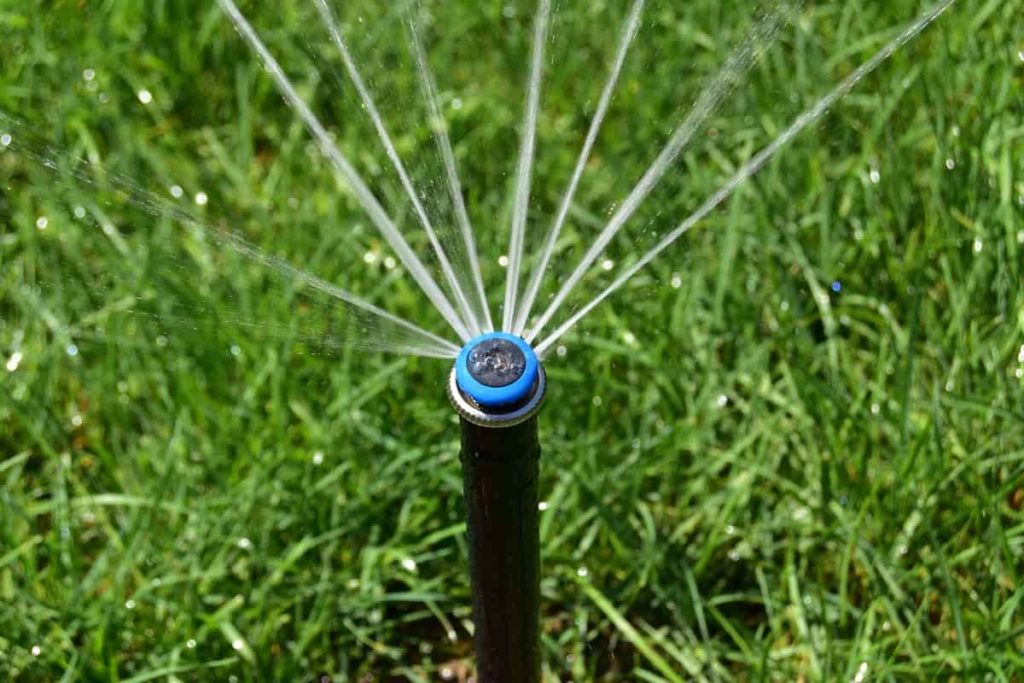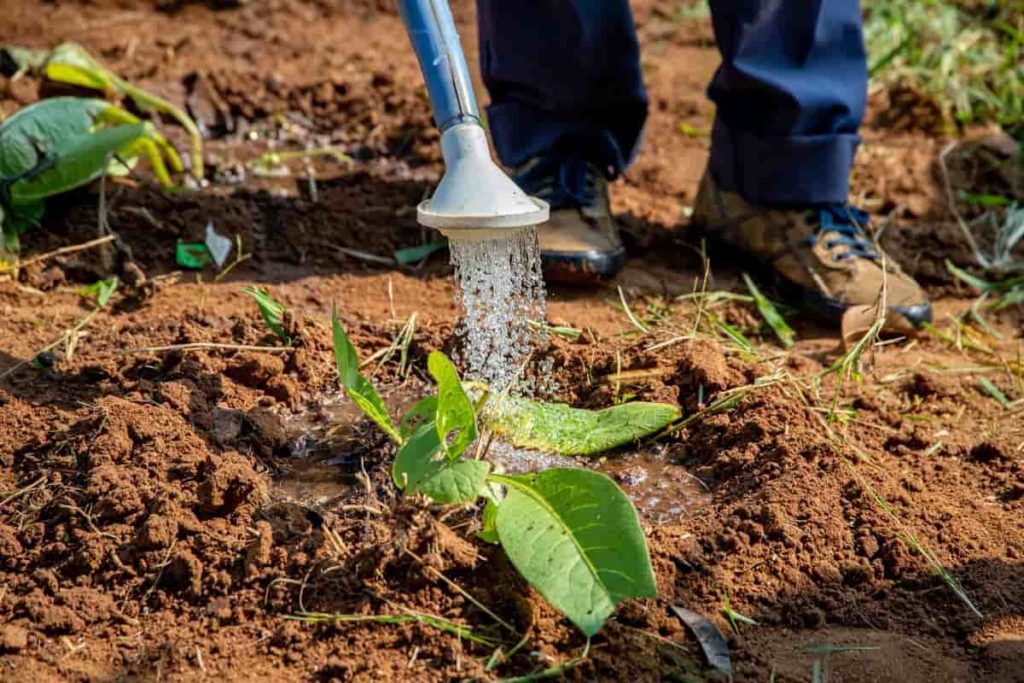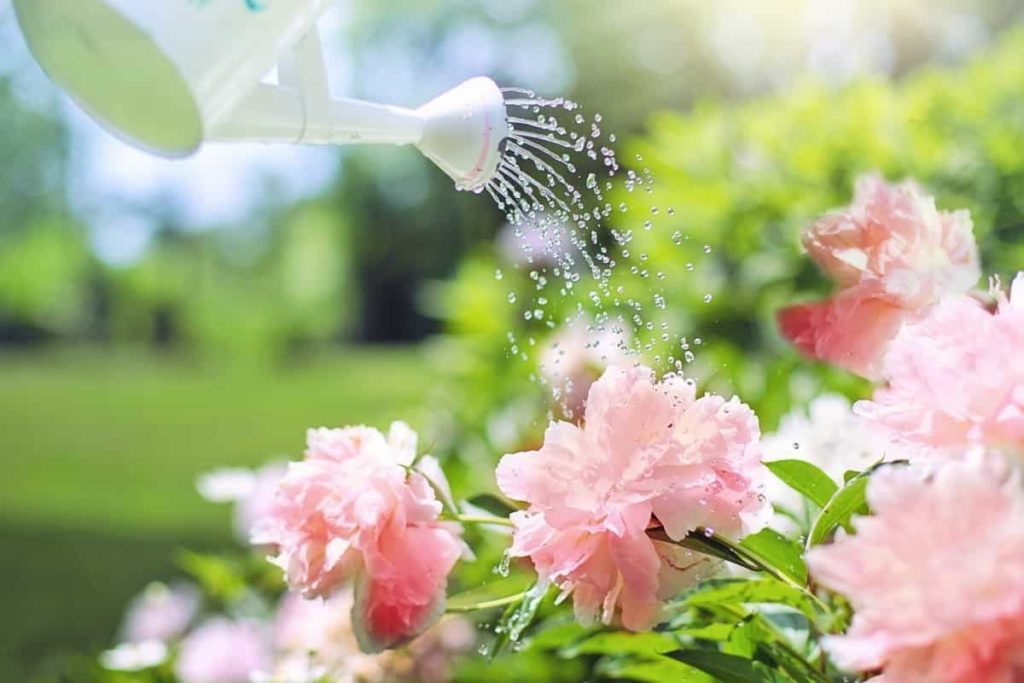To deliver a good crop, summer vegetables require nine or even more hours of continuous sunlight with enough water supply. Crops grow at soil temperatures over 71 degrees Fahrenheit. Most vegetable plants require a pH of approximately 7 and a five percent or higher organic material properties of soil.

Vegetable plants need at least 3 times watering a week. It absorbs more water in summer to produce the crops properly, so watering the vegetable garden in summer is a difficult and important process and the amount of water required for plants varies with different vegetable crops. Let’s check out the summer watering guide for vegetables, flowers, and herbs.
How to supply water to the root layer of plants?
The goal is to maintain the soil or mulch wet all of the time. Improper irrigation can also cause bitter tastes and a disease known as root end. To stimulate roots and also go through warm soil top, the water must flow deep in the ground. Place a small cup in the vegetable soil and water the soil till it reaches an inch or two from the sprinkler.
The drawback of using sprinklers for hours is they wet the leaves constantly. Because the leaves get wet for long durations, foliage pathogens may appear. If you’re going to use the sprinkler, make sure you use it in the early hours because the leaves will be dried by noon, and they won’t be affected by the pathogens.
Rotor systems in irrigation
Spray heads are often less efficient than rotor systems. They pour water at a significantly slower speed than sprinklers, helping the soil to better absorb moisture.
In case you miss this: Garden Vegetable Seeds for Summer

How drip irrigation is used in summer for vegetable plants?
Consider investing in “drip irrigation” if you have a bigger yard with crops spaced 1 foot or more apart. This is generally done with hoses or silicone tubes with small holes that provide a little amount of water straight to the root system, by providing appropriate moisture, humidity may be mitigated. Drip systems may be modified to meet the specific requirements of each plant. If possible, try not to combine various instruments in the same section or transmission line.
Uses of drip irrigation
- Water is applied directly to the root layer of the plant. There are no treatments between rows, leading to superior weed control and water savings in summer.
- Because the regions between rows remain dry, field operations like harvesting can continue during irrigation.
- Fertilizers may be delivered effectively using the drip irrigation technique.
Clay nutrient soil has better expanding characteristics, which allows it to keep moisture better and much more evenly in the soil. This soil type is pretty good to have in the vegetable farm, it stores the water in the root system even on the hot summer days even when the topsoil is dried.
Summer watering guide for flowers
There are no specific rules when it relates to watering. It’s a personal decision that is determined by the type of flowering plant, ground soil, temperature, and the season. All you have to do is check the soil moisture with your finger. Dig down a few inches with hands near the stem to check the root moisture percentage. You can also use a soil moisture meter. If the water goes along the exterior of the root system, leaving the roots in the center of the plant dry, watering is pointless.
The most important thing is to make sure that water reaches the root zone. Flower plants, which are vulnerable and sensitive to the weather, require special care in a variety of weather conditions. If we don’t take necessary precautions to protect flowers from the heat and moisture shortage, an unusually brutal summer can be quite dangerous to them.
In case you miss this: Summer Gardening Ideas, Tips, Techniques in India

What is the best time for watering flowers in summer?
Watering the flowers before 8 in the morning is efficient and productive. when the soil is moist and also the water has the advantage of getting deep into the plant’s roots before evaporating. It allows time to dry before dark, which helps to prevent pathogens. If the soil dries before night, your plants require multiple times watering.
The plants will have enough water before the next day’s heatwave. Flowers maintain a stable supply of water to thrive. Leaving them until they dry out-produces problems such as flower loss. Watering frequently by observing the moisture percentage in deep soil helps us from flower loss or stem end problems.
Mulching importance in summer
In summer mulching is usually done as soon as the soil heats. Summer mulches have three main functions: they soften the soil, prevent weed development, and hold the soil hydrated. Mulch dissolves over time into vegetation, which flows into the soil and feeds the plant by its root systems. Mulching may be considered as a 3 feet barrier and layered plant nutrition.
Evaporation of soil water from heatwaves is prevented by mulch. In the summer, it keeps the soil moist. Mulch does this by forming a barrier between both the soil and harmful seeds as well as sunlight. It also helps weeds to be plucked when their roots are still developing in the mulch, rather than in the soil, where they may split off and re-grow.
How to water efficiently in summer?
People commonly ignore the need of watering flowers on a regular schedule. Due to lack of moisture in the soil, the plants will produce fewer flowers or they may die with the plant being dry. Plants may also die when we give an excessive amount of water to the soil. We have to use some soaker hose for watering plants efficiently to reach the root level.
In case you miss this: Top 20 Garden Plants That Attract Pollinators to Your Garden

Soaker hose
A garden hose relieves the need to move heavy water containers from your water source to your flowers. Permit the hose to flow till the soil is moistened to a level of eleven inches on the plant’s requirement. Soaker hoses maintain a consistent water supply on the earth’s surface, ensuring that your plant’s leaves stay dry and clear of fungal development. Plants require water in combination with light and oxygen to grow. Flowering ecosystems will come from good watering methods.
Summer watering guide for herbs
A pleasant approach to generate healthful supplements to your diet is to grow a herb garden. If we study how to irrigate herbs properly, we can boost the health and productivity of our plants. Herbs are in different spices since each herb type has different watering levels. Herbs are the easiest growing plant with less space requirement and also can be grown in less lawn area than other plants. Summer is the best time for growing herbs on your lawn.
Do herbs need water frequently?
Never treat herbs like flowers when growing them. It’s easy to combine flowers with herbs since they have so many similarities, yet herbs have different watering requirements. They dislike standing water and moist soil. Water fresh herbs just when the soil feels extremely dry to achieve high irrigation. Watering herbs is better done early in the morning.
In case you miss this: How to Grow Bermuda Grass from Seeds: Germination Process

Water your herb plants when the weather is cool so that the water you spray will reach the roots of the plants more efficiently. If we water herb plants in the morning, around 8 there is less risk of evaporation. Your herbs will be at risk of not getting sufficient water if there are several weeds in your herb garden, as they will be competing with the other unwanted plants for water. The herbs will die by turning brown and dry if there are weeds in the garden.
Watering guide for outdoor herbs
Growing herbs outside is an easy process, as they observe a sufficient amount of sunlight with an easy watering process. When herbs are grown in a garden or lawn, they require at least 500ml-800ml of water for every plant each week. It’s really simple to grow herbs outside as they are good to be part of garden planting. Herbs grow all summer and won’t become bushy regularly. Herbs have a great fragrance as well. In summer by observing the temperature conditions and soil moisture we need to take necessary precautions in watering the herbs.
Watering guide for indoor herbs
When herbs are grown in small pots or containers which are usually kept near the windows or balcony areas, they require less water compared with outdoor growing herbs. Indoor herbs should be watered once a day or on alternate days depending on the soil moisture. Some herbs grow quickly, those types of herbs require more irrigation than other herbs.
Pests and illnesses don’t usually impact herbs. If you keep your herbs inside, the lack of light and airflow might attract pests like whitefly. Make sure your herbs are in pots with holes drilled on the bottom to keep excess water away from the roots.
In case you miss this: Top 15 Fast Growing Medicinal Herbs

Mulching the herbs in summer
Mulching usually helps the plants to maintain their soil moisture for more time than normal. When mulching is done for the herb plants, the soil will remain wet for more time, and thereby herb’s growth will be more. Herb gardening may be pleasant, simple, and low-maintenance. Try to create a successful and satisfying herb garden that will enhance both your garden and your cooking creations. Herbs require less moisture so mulching and watering are done to maintain the soil for hours.
- How to Grow Tomatoes Organically at Home: A Comprehensive Guide
- Organic Gardening on a Budget: Low-Cost Methods and Materials
- Gongura Seed Germination and Planting Methods
- Cabbage Seed Germination and Selection
- Broccoli Seed Germination and Selection
- Asparagus Seed Germination and Variety Selection
- Seasonal Flower Gardening: Best Practices for Spring, Summer, Fall, and Winter
- How to Grow Hibiscus from Flower
- Plantation Ideas for Home Decoration: A Beginners Guide
- Flower Garden Designs and Layouts for Beginners
- Planting and Spacing Techniques in Papaya: A Beginner’s Guide
- Growing Gold: Essential Techniques for Planting Pineapples
- How to Make Kalanchoe Plant Bushy: Home Remedies and Solutions
- 11 Reasons Why Your Gardenia is Not Blooming: Home Remedies and Solutions
- Eco Elegance: The Guide to Designing a Drought-Tolerant Landscape
- Gardening on a Slope: Strategies for Hillside Landscaping
- Nourish and Flourish: Top Organic Mulches for Thriving House Plants
- Everything You Want to Know about Indian Mogra Flower: Discover Uses and Growing
- Green Thumb Success: Expert Tips for Cultivating Greenhouse Pumpkins All Year Round
- Maximize Growth & Flavor: The Ultimate Guide to Companion Planting in Herb Gardens
- How to Control Rhododendron Problems Naturally: Home Remedies and Organic Ways to Fix Them
- Natural Magic: The Remarkable Benefits of Cinnamon for Plants
- Best Steps to Revive Dying Tulip with Natural and Organic Treatment
- 10 Reasons Why Your Angel Trumpet is Not Blooming: Remedies and Treatment
- How to Fix Periwinkle Leaf and Flower-Related Problems: Natural Remedies and Solutions
- How to Fix Zinnias Leaf and Flower Problems: Discover Natural and Home Remedies
- Organic Steps to Induce Lemon Tree Flowers: A Comprehensive Guide
- Bloom Booster: Crafting the Perfect Homemade Bougainvillea Fertilizer
- Optimizing Growth: A Guide to Applying NPK Fertilizer for Potted Plants
- 10 Best Homemade Fertilizers for Rubber Plant: DIY Recipes and Application Method
- How to Boost Female Pumpkin Flowers: Effective Steps for More Flowers and High Yields
- Transform Your Indoor Garden: Top Benefits of Pink Salt for Houseplants
- 10 Best Homemade Fertilizers for Peacock Plants (Calathea): Easy DIY Guide
- Unlock Blooms: 9 Reasons Why Your Potted Chrysanthemum is Not Blooming
- 8 Reasons Why Your Potted Hibiscus is Not Blooming: Fix it with Simple Solutions
- Unlock Blooms: 9 Key Reasons Your Potted Frangipani Won’t Flower